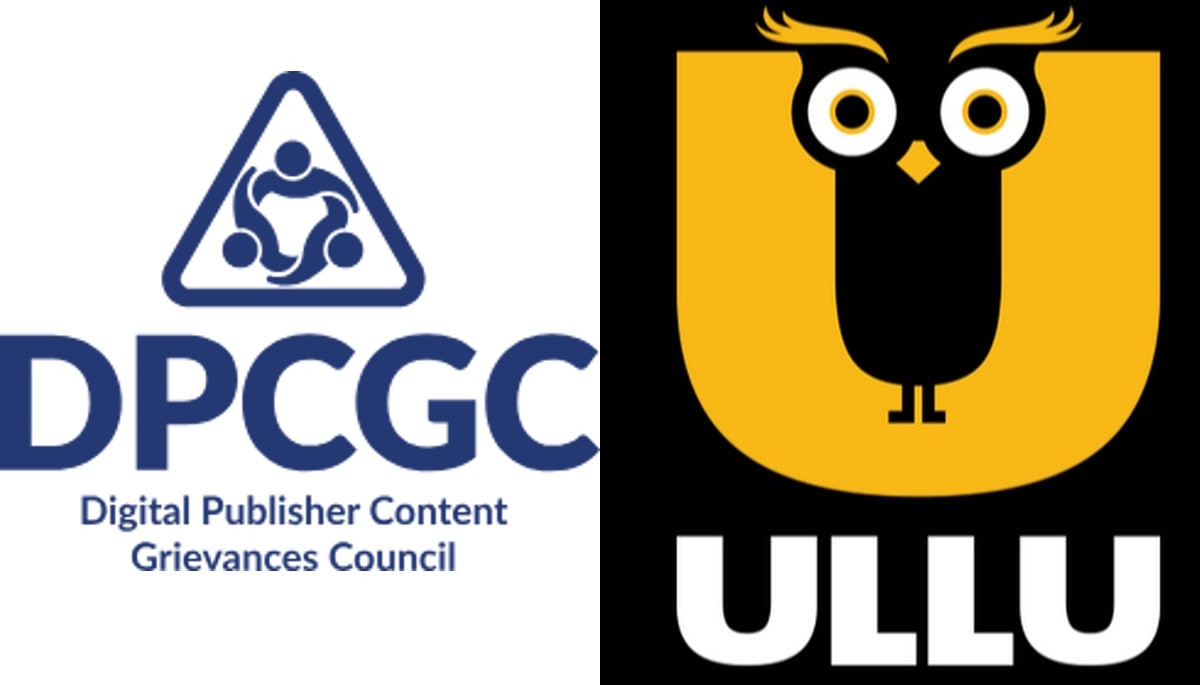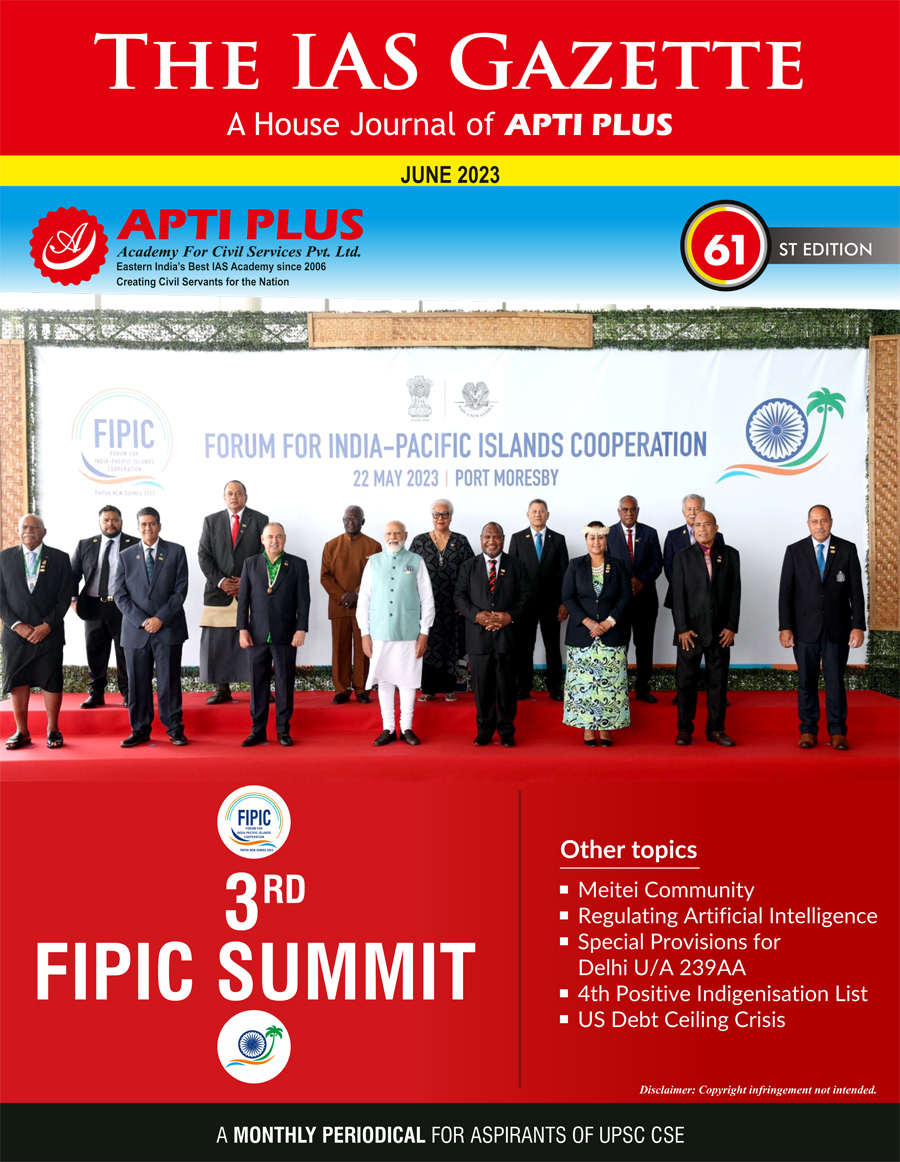
Copyright infringement not intended
Context: The Digital Publisher Content Grievances Council (DPCGC), a self-regulatory body for online curated content (OTT) platforms, has issued an order against an OTT platform called ULLU for streaming obscene and nude content. This is the first time that the DPCGC has invoked the Information Technology Rules (2021) to recommend punitive action on a platform.
Details
- The order was passed last week after a complaint was filed alleging that some of the web series on ULLU are contrary to the law of the land and the IT Rules, which regulate the digital media ethics code.
- The complainant had approached the platform first but was not satisfied with the response. The ULLU platform denied the allegations and claimed that it had the right to freedom of speech and expression as guaranteed by the Constitution.
- The DPCGC, headed by retired Supreme Court Judge Justice A K Sikri, did not accept the platform's arguments and expressed grave objection to the content being streamed on ULLU. The council ordered the platform to either remove these web series or make suitable edits to the offending scenes within 15 days. The council also warned the platform to comply with the IT Rules and respect the sensibilities of the viewers.

Digital Publisher Content Grievances Council (DPCGC)
About
- The Digital Publisher Content Grievances Council (DPCGC) aims to provide a mechanism for self-regulation of online content published by digital media platforms in India.
- The DPCGC was launched by the Internet and Mobile Association of India (IAMAI), a non-profit industry body that represents the interests of online and mobile value-added services in the country.
- The DPCGC is composed of 14 founding members, including some of the leading digital media platforms such as Netflix, Amazon Prime Video, Disney+ Hotstar, Zee5, Viacom18, SonyLIV, MX Player, Jio Cinema, Eros Now, Alt Balaji, Arre, HoiChoi, Hungama and Shemaroo.
- It has an advisory board that consists of eminent personalities from the fields of media, entertainment, law, academia and civil society.
Objective
- The main objective of the DPCGC is to offer a credible and efficient forum for aggrieved consumers to redress their complaints regarding the content offered by the digital media platforms that are signatories to the IAMAI's Universal Self-Regulation Code for Online Curated Content Providers (OCCPs).
- The OCCPs are platforms that provide curated content to users on a subscription or ad-based model. The self-regulation code was adopted by the IAMAI and lays down the guiding principles and best practices for responsible content creation and dissemination by the OCCPs.
Grievance redressal mechanism
- The DPCGC operates as a two-tier grievance redressal mechanism.
- The first tier is the internal committee of each OCCP, which is responsible for addressing the complaints received from the consumers within 15 days.
- The second tier is the DPCGC itself, which acts as an oversight body and hears the appeals filed by the complainants who are dissatisfied with the decision of the internal committee.
- The DPCGC has the power to issue appropriate guidance or advisories to the OCCPs for ensuring compliance with the self-regulation code.
Significance
- The DPCGC is a significant step towards ensuring that the online content published by digital media platforms is in accordance with the constitutional and legal framework of India, as well as the cultural and social norms of the society.
- It promotes creativity and innovation in the digital media sector while respecting the artistic freedom and expression of the content creators.
- It balances the interests of all the stakeholders involved in the online content ecosystem, including the consumers, the OCCPs, the content creators and the government.
Challenges and limitations
- Lack of participation from some of the major digital media platforms such as YouTube, Facebook and Instagram, which have not signed up for the self-regulation code or joined the DPCGC.
- Legal validity and enforceability of the decisions and advisories issued by the DPCGC, which are not binding on the OCCPs or the complainants.
- Possibility of conflict or overlap between the DPCGC and other regulatory bodies or authorities that may have jurisdiction over online content issues, such as the Ministry of Information and Broadcasting (MIB), which recently notified new rules for regulating digital media intermediaries and publishers under the Information Technology Act, 2000.
Way Forward
- There is a need for greater dialogue and coordination among all the relevant stakeholders to ensure that the DPCGC functions as an effective and credible self-regulatory body for online content.
- Need for more awareness and education among consumers about their rights and responsibilities regarding online content consumption and complaint filing.
- It should also constantly review and update its policies and procedures to keep pace with the evolving trends and challenges in the digital media sector.
Social media and OTT platforms
About
- Social media and OTT platforms are digital services that allow users to create, upload, stream or share content such as text, images, videos, audio, etc. without the intervention of a traditional intermediary such as a cable operator or a broadcaster.
- Some examples of social media platforms are Facebook, Twitter, Instagram, YouTube, TikTok, etc. Some examples of OTT platforms are Netflix, Amazon Prime Video, Disney+, Spotify, etc.
- They are increasingly becoming popular sources of entertainment, information and communication for millions of people around the world. However, they also pose some serious challenges to the regulation of content that is uploaded, streamed or shared on these platforms.
Features that make them attractive to users and creators
- Accessibility: Users can access these platforms from anywhere and anytime using their devices such as smartphones, tablets, laptops, etc.
- Affordability: Users can access these platforms for free or at a low cost compared to traditional media services.
- Diversity: Users can access a wide range of content from different genres, languages, cultures, perspectives, etc.
- Interactivity: Users can interact with the content and other users through likes, comments, shares, ratings, reviews, etc.
- Creativity: Users can create and upload their content or modify existing content using various tools and features.
Significances
- Empowerment: Users can express their opinions, views, emotions, etc. freely and openly on these platforms. They can also access information and knowledge from diverse sources and perspectives.
- Education: Users can learn new skills, languages, cultures, etc. from the content available on these platforms. They can also access educational resources and courses from various institutions and experts.
- Entertainment: Users can enjoy various forms of entertainment such as movies, shows, music, games, etc. on these platforms. They can also discover new content and creators that suit their preferences and tastes.
- Engagement: Users can participate in various social causes and movements through these platforms. They can also connect with other users who share their interests and values.
Challenges
Misinformation
- Users can encounter false or misleading information on these platforms that can influence their opinions, beliefs, decisions, etc. This can also lead to the spread of rumours, propaganda, hate speech, etc.
Privacy
- Users can face the risk of their data being collected, stored or shared by these platforms without their consent or knowledge. This can also lead to the misuse or abuse of their data by third parties such as advertisers, hackers, governments, etc.
Addiction
- Users can become addicted to these platforms and spend excessive time and money on them. This can affect their physical and mental health as well as their social and professional relationships.
Piracy
- Users can access illegal or unauthorized content on these platforms that can violate the intellectual property rights of the original creators or owners. This can also affect the quality and revenue of legitimate content providers.
Regulating the content on social media and OTT platforms is a complex and challenging task that requires a balanced approach that respects the rights and interests of all the stakeholders involved such as users, creators, Platforms, governments, society, etc.
Possible ways for regulating the content on social media and OTT platforms are:
Self-regulation
- Platforms can adopt their policies and guidelines for regulating the content of their services. They can also use various tools and mechanisms such as algorithms, filters, moderators, reporting systems, etc. to monitor, review, and remove any objectionable or harmful content.
Co-regulation
- Platforms can collaborate with other stakeholders such as governments, regulatory bodies, civil society organizations, etc. to develop and implement common standards and norms for regulating the content of their services. They can also share information and best practices to improve their regulatory processes.
User-regulation
- Users can exercise their responsibility and discretion in regulating the content on these platforms. They can also use various tools and features such as privacy settings, block lists, parental controls, etc. to control what they see or share on these platforms.

Conclusion
- Social media and OTT platforms are transforming the way we consume, create, and communicate content in the digital age. They offer many benefits but also pose many challenges in regulating the content on them. A balanced approach that involves self-regulation, co-regulation, and user-regulation can help in ensuring that these platforms are used responsibly and ethically and that respect the rights and interests of all the stakeholders involved.
Must Read Articles:
Regulating Over-The-Top (OTT) Content: https://iasgyan.in/ig-uploads/pdf/799583.pdf
Amendments to the Information Technology (Intermediary Guidelines and Digital Media Ethics Code) Rules, 2021 (IT Rules, 2021): https://www.iasgyan.in/daily-current-affairs/amendments-to-the-information-technology-intermediary-guidelines-and-digital-media-ethics-code-rules
INFORMATION TECHNOLOGY (INTERMEDIARY GUIDELINES AND DIGITAL MEDIA ETHICS) RULES, 2021: https://www.iasgyan.in/daily-current-affairs/information-technology-intermediary-guidelines-and-digital-media-ethics-rules-2021
|
PRACTICE QUESTION
Q. The rapid growth of social media and over-the-top (OTT) platforms has brought many benefits to society, such as increased connectivity, information sharing, and entertainment. However, it has also raised some concerns about the quality, credibility, and impact of the content that is produced and consumed on these platforms. How to ensure that the content on social media and OTT platforms is respectful, responsible, and reliable?
|
https://indianexpress.com/article/india/regulatory-body-tells-ott-platform-to-take-down-content-8687649/














